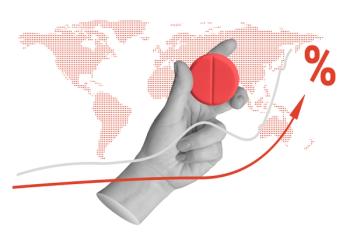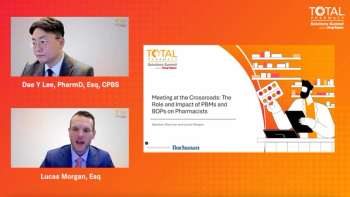
Experts offer smart tips for smart pumps
Smart pumps must be part of a smart system to actually boost patient safety and improve outcomes.
"The reality is that you can kill a patient with a single button push on a traditional pump," said Mark Sullivan, assistant director of pharmaceutical services at Vanderbilt University Medical Center. "Our goal is to create a smarter system that alerts providers before harm occurs."
Vanderbilt was an early adopter of smart pumps, Sullivan told a recent national teleconference sponsored by the Institute for Safe Medication Practices. Programmable drug libraries are the key element that makes pumps smart. But designing libraries with upper and lower dosing limits and other clinical parameters for every drug is a complex task.
Success depends on targeting specific outcomes with specific goals based on specific problem areas, Sullivan said. He advised working on one problem area at a time, one small improvement at a time. "Toyota can tell you to the car how many vehicles it made this year and the precise error rate and what each error means," he said. "I'm not sure we can all do that in health care, but we should."
That's the approach the University of Michigan took in implementing smart pumps, said former medication safety coordinator John Mitchell. Internal review showed that patient-controlled analgesia and opioids were a leading cause of medication errors. Root-cause analysis found that the major source of pump-related errors was the initial programming.
Mitchell said there were three distinct sources of error. One-third of drug errors were wrong drug concentration. Opioid makers produce few concentrations, he said. Lack of commercial supply forces hospitals into error-prone calculations and admixing. Second, most traditional pumps do not name the drug being administered on the pump control screen. That hinders nurses verifying drug, dose, and concentration. A third problem is inadvertently pushing a key twice when entering a dosage. That creates a 10-fold dosage error, he noted.
Smart pumps help solve all three problems, Mitchell said. Michigan uses Hospira pumps, in part because they can be programmed to demand bar-coded drug labels. Every drug that goes through the pumps must be bar-coded, he said. The hospital repackages commercially available concentrations as needed. Each pump automatically verifies drug and concentration from the bar-coded label and displays the information on the pump screen for the nurse to check and confirm.
Pumps also check concentration, rate, time, and dose against the onboard drug libraries. If any factor could endanger the patient, the pump stops. It will not restart until the potential error is corrected. "It is not enough to catch errors," Mitchell explained. "You have to catch them before they get to the patient."
The key to Michigan's success is customized drug libraries based on clinical care areas, or CCAs. The two basic CCAs are pediatric and adult. Pharmacists direct drug library teams that include a clinical nurse specialist, a staff nurse, and a nursing educator. Teams subdivide each CCA by critical characteristics, weight for pediatric patients, and prior opioid exposure for adults. Pediatric libraries offer 11 weight ranges, with hard and soft limits on each range. Adult libraries offer four ranges based on prior exposure to opioids, with similar hard and soft limits.
Violating a hard limit stops the pump cold, Mitchell said. The error must be corrected before the infusion can begin. Violating a soft limit generates an alert, but the nurse can override the alert and begin treatment.
The smart pump system took about six months to design and implement, Mitchell said. After a year in operation, it is a solid success, with support from all levels in the institution. The results speak for themselves, he said. "Since day one, bar-coding has eliminated that 33% of errors due to wrong concentration," he said. The smart pumps also prevented potential opioid overdosing in 19% of patients and underdosing in 9%, he added.
Newsletter
Pharmacy practice is always changing. Stay ahead of the curve with the Drug Topics newsletter and get the latest drug information, industry trends, and patient care tips.










































































































































































































